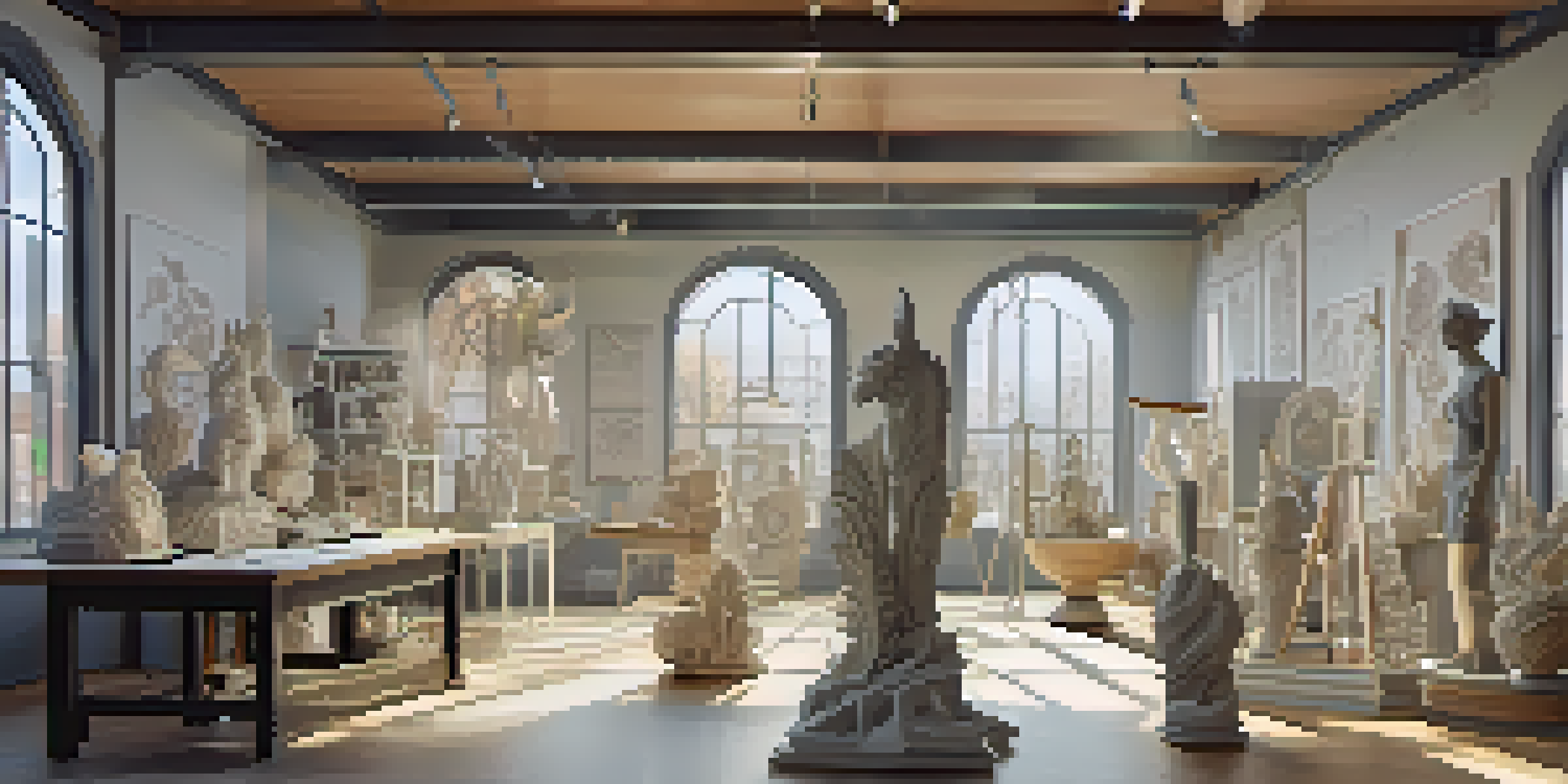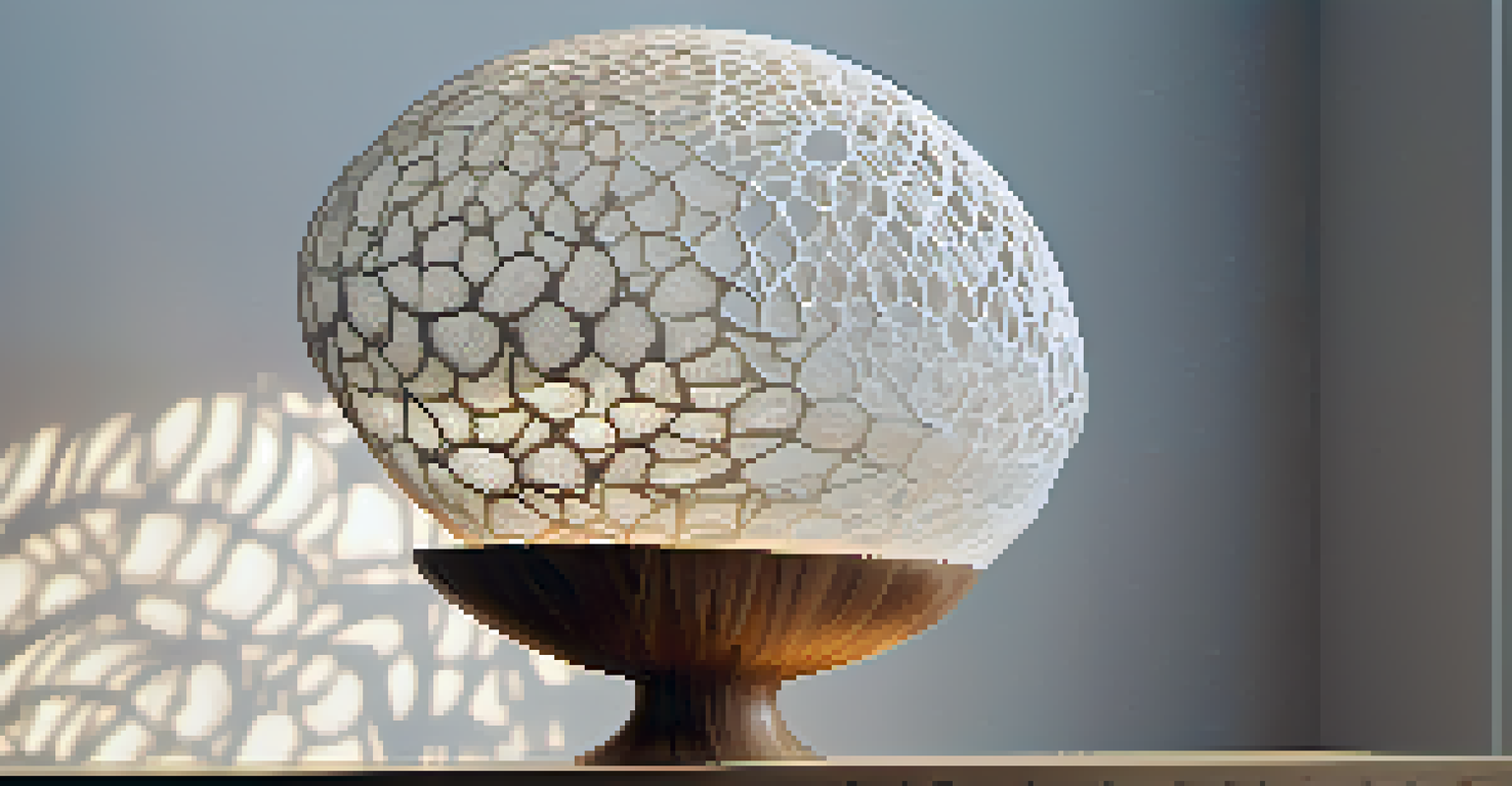3D Printing in Art: Revolutionizing Sculptural Practices

Introduction: The Intersection of Art and Technology
In recent years, technology has woven itself into the fabric of artistic expression, and one of the most exciting innovations is 3D printing. This technique allows artists to create intricate sculptures that were previously unimaginable. Just like a painter has a palette of colors, a sculptor now wields the power of digital design and automated fabrication.
The greatest innovations in art often come from the collaboration between artists and technology.
3D printing transcends traditional methods, enabling the creation of complex forms and structures that challenge conventional notions of sculpture. With this technology, artists can experiment with shapes and materials in a way that was once limited to the realm of imagination. Think of it as giving sculptors a new set of tools that broadens their creative horizons.
As we delve deeper into this topic, we’ll explore how 3D printing is not just a fad but a revolutionary change in sculptural practices, enriching the art world and expanding possibilities for artists everywhere.
How 3D Printing Works in the Art World
At its core, 3D printing is a process where a digital model is transformed into a physical object layer by layer. Artists use computer-aided design (CAD) software to craft detailed models, which are then sent to a 3D printer. This printer builds the sculpture using various materials, such as plastic, metal, or even bio-based substances, depending on the desired outcome.

Imagine sculpting with clay, where each layer adds depth and detail; 3D printing operates on the same principle but with precision. Artists can reproduce their designs with exact replicas, allowing for consistency in their work. This level of control and repeatability is a game-changer, particularly for those who wish to produce multiple editions of a piece.
3D Printing Revolutionizes Sculpture
This technology allows artists to create intricate and innovative designs that were previously impossible with traditional methods.
Furthermore, this technology empowers artists to push the boundaries of their creativity, enabling them to explore concepts that a chisel and hammer simply can’t achieve. It’s like opening a treasure chest filled with endless creative possibilities.
The Benefits of 3D Printing in Sculpture
One of the standout benefits of 3D printing is the ability to create intricate designs that would be incredibly time-consuming or impossible to make by hand. Artists can incorporate complex geometries and detailed textures that enhance the visual appeal of their sculptures. This opens the door to new artistic expressions, from delicate lace-like structures to bold, abstract forms.
Art is not a mirror held up to reality, but a hammer with which to shape it.
Additionally, 3D printing reduces material waste compared to traditional sculpting methods. Since the printer only uses the material necessary to create the sculpture, this environmentally friendly aspect is appealing to many modern artists. It’s akin to cooking with a recipe that minimizes leftovers, ensuring that every bit of material is put to good use.
Moreover, the speed of production is another significant advantage. Artists can iterate their designs quickly, making adjustments and improvements on-the-fly. This agility allows for a more dynamic creative process, where ideas can evolve rapidly, much like a conversation that flows naturally.
Challenges Faced by Artists Using 3D Printing
Despite its transformative potential, 3D printing in art does come with its challenges. One notable hurdle is the learning curve associated with mastering CAD software and the printing process. For many traditional sculptors, transitioning to this digital medium may feel daunting, much like learning a new language.
Additionally, the initial costs of 3D printers and materials can be prohibitive for some artists. While prices have been decreasing, high-quality printers and specialized materials can still stretch a budget. It’s essential for artists to weigh the investment against the potential benefits and opportunities that 3D printing could bring to their practice.
Benefits Include Speed and Precision
3D printing enhances artistic expression by enabling rapid prototyping and producing exact replicas of designs.
Finally, as with any new technology, there’s a concern about originality and the authenticity of the work. Some critics question whether a piece created through digital means holds the same value as a handcrafted sculpture. This ongoing debate reflects broader discussions about the nature of art in the digital age.
Case Studies: Artists Embracing 3D Printing
Several contemporary artists have embraced 3D printing to create stunning works that challenge traditional sculptural boundaries. For example, artist Joshua Harker is known for his intricate, delicate 3D-printed sculptures that push the limits of what can be achieved with this technology. His work showcases the beauty of complexity, often resembling organic forms found in nature.
Another notable figure is Nick Ervinck, who uses 3D printing to create large-scale installations that blend art and architecture. His pieces often feature vibrant colors and bold shapes, reflecting a futuristic vision that captivates viewers. By integrating 3D printing into his practice, Ervinck has carved out a unique niche that resonates with the current artistic landscape.
These case studies illustrate how artists are not merely adopting 3D printing but are actively redefining sculptural practices. Their innovative approaches serve as inspiration for others in the art community, encouraging experimentation and pushing the boundaries of creativity.
The Future of 3D Printing in Sculpture
As technology continues to advance, the future of 3D printing in sculpture looks promising. With ongoing developments in materials and printing techniques, artists will have even more resources at their disposal to create groundbreaking works. Imagine sculptures that can change shape or respond to their environment; this is not far from becoming a reality.
Moreover, the accessibility of 3D printing technology is increasing, with more artists gaining access to printers and training. This democratization of tools will likely lead to a surge of creativity and innovation in the art world. Just like the internet revolutionized how we share information, 3D printing is set to transform how artists create and connect with their audiences.
Challenges in Adopting New Tech
Artists face hurdles like learning curves and costs associated with transitioning from traditional sculpting to 3D printing.
Ultimately, the fusion of art and technology will continue to evolve, leading to new forms of expression that challenge our perceptions of sculpture. The future is not just about 3D printing; it's about how artists will continue to innovate and inspire in an ever-changing landscape.
Conclusion: Embracing the Artistic Revolution
In conclusion, 3D printing is not merely a tool for artists but a catalyst for a revolution in sculptural practices. It empowers creators to explore new dimensions of their artistry, allowing for complex designs and sustainable practices. This shift invites us to rethink what sculpture can be and how it interacts with the world around us.
As we’ve seen throughout this article, the benefits of 3D printing are significant, although challenges remain. However, the potential for innovation far outweighs the obstacles, inspiring a new generation of artists to embrace this technology. Think of it as a bridge connecting tradition with the future.

Ultimately, the evolution of 3D printing in art encourages us to remain open-minded and curious about the possibilities that lie ahead. Just as the art world has always adapted to new influences, it is now poised to thrive in this exciting era of technological advancement.